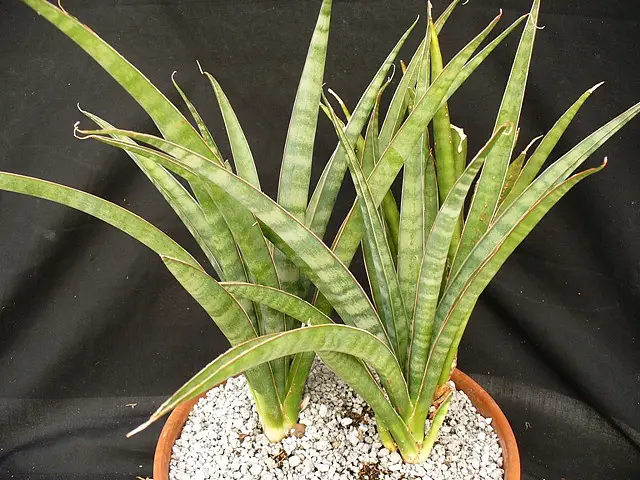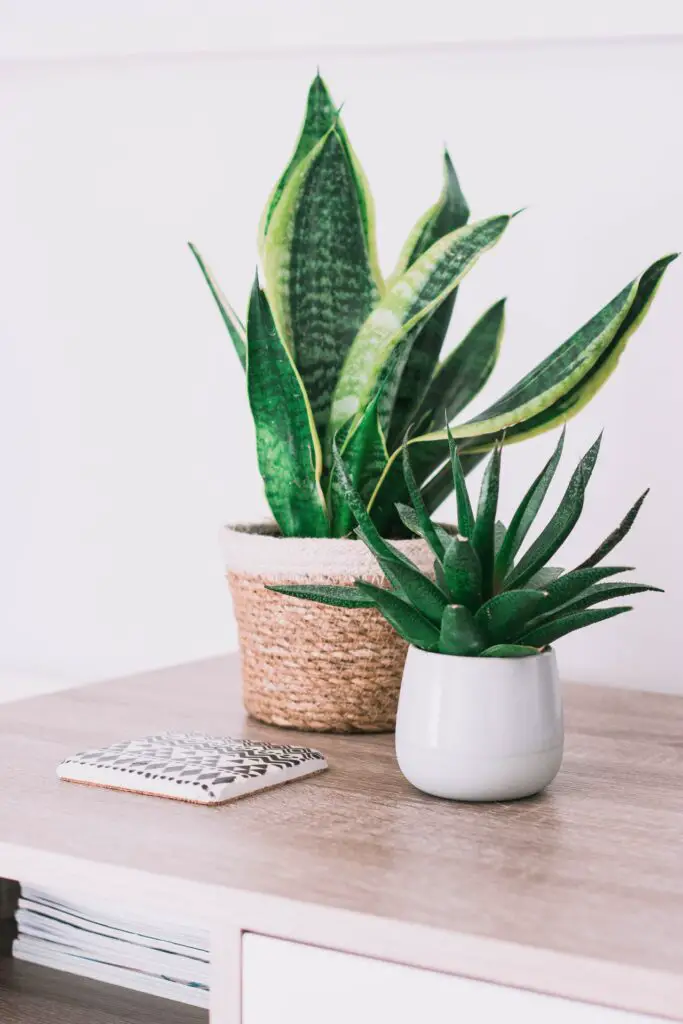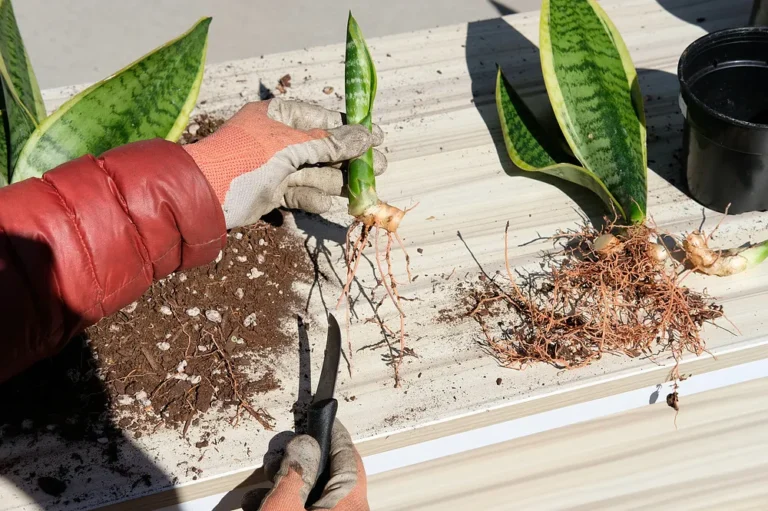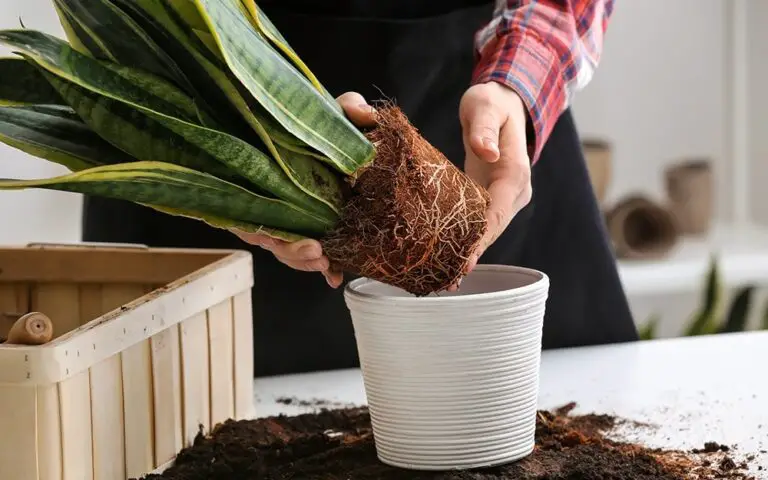Sansevieria Aethiopica

Also Known As
At A Glance
Features
Origin
S. Aethiopica plant is native to Africa. It is specifically found in dry open regions of Botswana, Namibia, South Africa, Zambia, Mozambique and Zimbabwe.
Size
It is a medium sized plant that can grow up to 2.5 feet (75 cm) tall. The maximum spread of the plant is around 1.5 feet. Flower stalks grow upright, up to 2 feet tall.
Foliage
This Sansevieria variety has ascending, slightly recurved, loosely clustered leaves. There are 3-15 leaves in a rosette and they form a beautiful fountain shape. The leaves are green colored, mottled with pale green irregular bands. Each leaf is half folded making a c-shape. The leaves have white and red margins and pointy tips.
Flower
The mature plants may produce beautiful flowers about once a year. The flowers appear in numerous small clusters on the upper part of a vertical flower spike. They are creamy white with pinkish-purple margins. The stalks are densely packed with flowers. Plant produces small round reddish berries after the blossom.
Toxicity
Although the plant has medicinal uses, Sansevieria Aethiopica is a mildly toxic plant when ingested. It's advised to keep it away from pets and children. Consuming any part of the plant in large amounts can cause vomiting, diarrhea, drooling, stomach ache or mouth irritation.
Growth Season
This evergreen plant actively grows during warmer climates like the spring and summer seasons. In the winter, the plant grows extremely slowly. Flowering usually happens in the spring.
Pests
Generally, this variety is not susceptible to pest infestations. In rare situations, spider mites or mealybugs can attack the plant. Use alcohol dipped cotton ball or insecticides to wipe off the bugs from your plant. To protect the plant from getting fungal infestations, don't let the water sit in the grooves of its leaves
Propagation
There are a few ways to propagate S Aethiopica. Dividing the roots to make new plants is a simple and efficient way. Separate the plant into sections where each part has some leaves and rhizomes. Then plant them separately. Another way is to use leaf cuttings where you can cut a healthy leaf into 3-4 inches long sections and plant them in soil until they form tiny roots.
Growing Conditions
Water
Like most Sansevierias, this variety is drought-tolerant and doesn't require frequent watering. Allow the soil to dry completely before you water. The watering schedule can be once every 1-2 weeks during the growth season. In winter time, it requires much less water. Don't let your plant sit in wet and soggy soil, cause it can develop root rot.
Light
S. Aethiopica can handle anything from the full sun to low light conditions. Bright and filtered sunlight is ideal for the growth. Outdoor plants prefer shade or semi-shade in tropical regions, where the sunlight can be too harsh. In a non-tropical climate, this plant can tolerate few hours of daily sun, especially in the morning and evening.
Soil
Snake plants are prone to overwatering. So to avoid sogginess, the potting soil must be porous and well-draining. You can use a combination of organic and inorganic ingredients. Add in coconut coir, gravel, perlite or pumice in a regular soil (max 40-50%) to increase its drainage. Whichever mix you use, make sure that water can drain freely.
Environment
An ideal temperature range for this plant is 60-85°F (15-29°C). Like most Sansevieria, it has excellent heat tolerance. Although it can survive low temperatures if the roots kept dry, it's best to avoid frost. Temperatures below 50°F can cause permanent damage to the leaves. Wet soil combined with extreme cold can be fatal for the plant.


